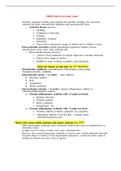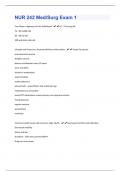Globalisation
*Globalisation: countries are becoming more and more closely integrated
*Eval: not a new phenomenon, however, the pace of global integration has increased
considerably over the last 50 years
Characteristics
in trade as a proportion of world GDP –> movement of goods services
movements of financial capital people between countries
specialisation and division of labour
foreign direct investment (FDI) by TNC’s
Factors contributing to globalisation
1. * transport costs –> containerisation: volume-based economies of scale, fuel
efficiency , infrastructure
*Eval: oil prices so not as significant
1. * cost of communications –> internet: social media, comparison sites, online
payments (PayPal)
*Eval: less in developing countries: no internet
2. trade barriers –> WTO: protectionist policies
3. Collapse of communism opening up of China –> offshoring/outsourcing: wider
markets, take advantage of economies of scale
4. Transnational (global) companies –> offshoring/outsourcing: wider markets, take
advantage of economies of scale
5. number and size of trading blocs –> comparative advantage
=> Impacts of globalisation
On countries
(+) Law of comparative advantage (CASTWOLS ) –> specialise –> trade –> world output,
living standards
(+) Technology transfer sharing of managerial techniques
,(-) Deglobalisation –> adopt protectionist policies –> protect domestic employment
(-) Increased inequality within developed countries –> much manufacturing transferred to
developing countries, demand for unskilled workers declined in developing countries, fall in
wages relative to those of skilled workers
(-) Overdependence on imports current account deficit of BoP
On governments ( X AD)
(+) Increase in economic growth and, therefore, in incomes (+ profits), tax revenues
(-) Tax avoidance –> transfer pricing: global company manages its accounting of internal
transactions within the company to show the highest profits in the country in which
corporation tax is lowest
On producers and consumers
(+) Producers: production costs because of economies of scale –> wider markets
(-) Domestic firms can’t compete with large TNC’s
(+) Consumers: choice of goods, prices may consumer surplus
(-) quality of goods and services
On workers
(+) job opportunities, wages than before
(-) Exploitation of labour
(-) Health and safety laws and regulation are usually less demanding in developing countries
On the environment
(-) External costs –> increased trade, air travel environmental degradation –> (draw
diagram)
,Specialisation and trade
Absolute advantage: when a country can produce more of a product than another country
Comparative advantage: when a country specialises in the production of those products in
which its opportunity cost is lowest
Assumptions underlying the theory of comparative advantage (Eval of CA)
No transport costs –> transport costs might outweigh the benefits of CA
No trade barriers –> trade barriers might distort CA
Constant returns to scale –> specialisation production –> average costs,
diseconomies of scale
Perfect mobility of resources between different uses
Buyers/consumers have perfect knowledge
Country Palm oil Televisions
A 10,000 5,000
B 4,000 4,000
Total 14,000 9,000
Country A has an absolute advantage in the production of both palm oil televisions –> to
determine whether trade will be worthwhile, the opportunity costs must be calculated:
Opportunity cost of producing 1 kilogram of palm Opportunity cost of
oil producing 1 television
A ½ 2
B 1 1
For trade to be beneficial, terms of trade must lie between the opportunity cost ratios. In
this case, the terms of trade must lie between 1 kilogram of palm oil and 2 kilograms of
palm oil for one television.
The terms of trade are measured as followed:
index of export prices x 100
index of import prices
, Advantages and disadvantages of specialisation and trade –> same as impact of glob!
On countries
(+) Law of comparative advantage (CASTWOLS ) –> specialise –> trade –> world output,
living standards
(+) Technology transfer sharing of managerial techniques
(-) Deglobalisation –> adopt protectionist policies –> protect domestic employment
(-) Increased inequality within developed countries –> much manufacturing transferred to
developing countries, demand for unskilled workers declined in developing countries, fall in
wages relative to those of skilled workers
(-) Overdependence on imports current account deficit of BoP
On governments ( X AD)
(+) Increase in economic growth and, therefore, in incomes (+ profits), tax revenues
(-) Tax avoidance –> transfer pricing: global company manages its accounting of internal
transactions within the company to show the highest profits in the country in which
corporation tax is lowest
On producers and consumers
(+) Producers: production costs because of economies of scale –> wider markets
(-) Domestic firms can’t compete with large TNC’s
(+) Consumers: choice of goods, prices may consumer surplus
(-) quality of goods and services
On workers
(+) job opportunities, wages than before
(-) Exploitation of labour
(-) Health and safety laws and regulation are usually less demanding in developing countries
On the environment
(-) External costs –> increased trade, air travel environmental degradation –> (draw
diagram)










